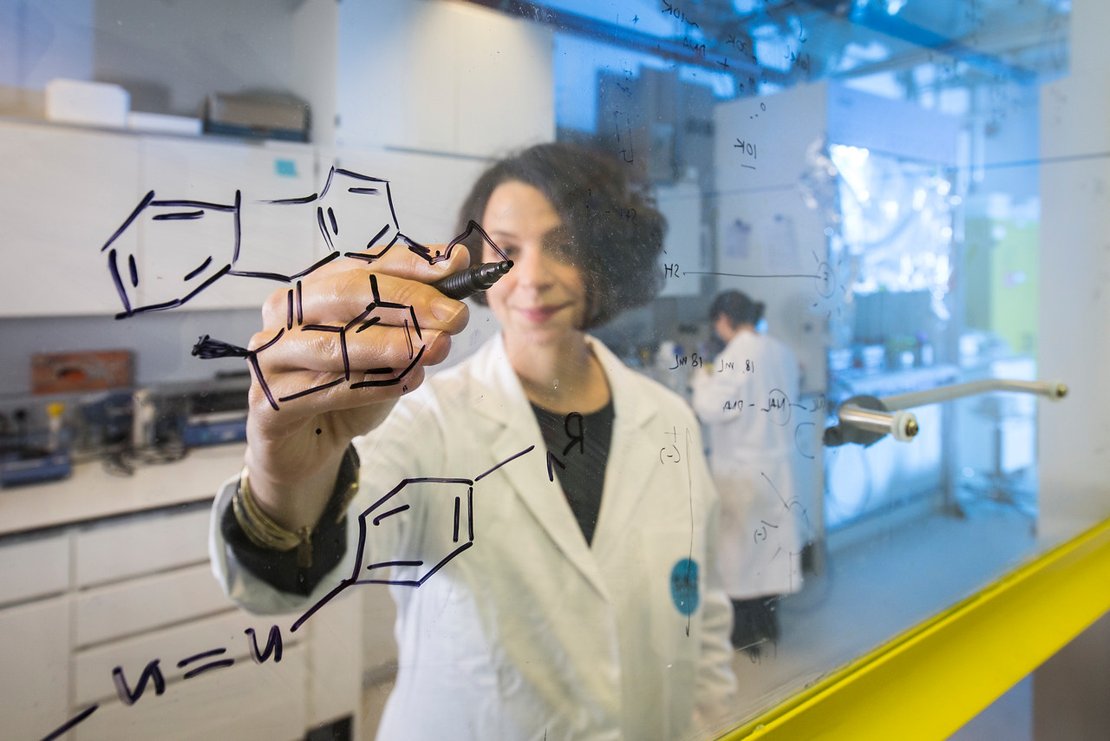Nathalie Katsonis develops smart materials that exhibit complex shape transformation, and autonomous motion, under illumination. She draws inspiration from the movements enabling essential life functions, such as growth, cellular division, and the phototactic behaviour of bacteria. On 30 November she will give her inaugural lecture, and this very week she received a major 'Consolidator Grant' of the European Research Council.
“Molecular machines generate the motion that is essential to life: from a growing plant, to the beating of heart or dividing cells; these processes are all pre-programmed at the molecular level. We chemists widely accept the idea that life has emerged from chemical reactions taking place in closed compartments; I would argue that this chemical evolution must have been followed immediately by the possibility to move, because these compartments need energy and nutrients,” Nathalie Katsonis explains. As an example she cites chemotaxis, the process by which the first bacteria moved towards food. Such larger-scale movements are mediated by the operation of biomolecular rotary motors.
The chemical origin for shape transformation
The research of Katsonis involves developing artificial molecular materials that are capable of movement, often under the influence of light. To achieve this, she develops strategies to incorporate artificial molecular machines, motors or switches (or other molecules enabling complex movement) – in practice, these are all nanoscale objects – into macroscopic materials. The scientific challenge is to have these molecular machines work together to generate complex movements at the macroscopic level.
A lot of research in the field of artificial molecular motors and switches has been performed in liquids, where it is impossible to produce any actual work. Katsonis, on the other hand, explores strategies to amplify the motion of these molecules, by incorporating them in polymers and in liquid crystals. “In these materials, a small stimulus can lead to a significant change in characteristics or form. I’m exploiting this fact, because it’s exactly what’s needed to coordinate the movement of individual molecules.”

ERC
In the week of her inaugural address, Nathalie Katsonis received the news that she will receive a two million euro 'Consolidator Grant' from the European Research council, for her project ‘Morphogenesis of photo-mechanized molecular materials’. In 2012, she already received an ERC Starting Grant.
Nathalie Katsonis
Nathalie Katsonis is French and Greek, born in Austria. She studied and did her doctoral research at the Université Pierre et Marie Curie (Paris). After gaining her PhD in 2004 for her work on molecular self-assembly on surfaces, she joined the research group of the Nobel Prize winner Professor Ben Feringa at the University of Groningen, as a post-doctoral fellow researching into artificial molecular motors and switches on surfaces and interfaces. After working as an Associate Researcher with CNRS (Toulouse) she joined the University of Twente in 2011 as Professor of Bio-inspired and Smart Materials with the UT research institute MESA+. Katsonis has won a variety of prestigious prizes for her work, including the Royal Dutch Chemical Society Gold Medal, the most important Dutch award for outstanding researchers in chemistry.
Lecture
Nathalie Katsonis’ inaugural lecture, Morphogenesis of Mechanized Matter, which is open to the public, will be held at 16.00 on 30 November in the Professor M.P. Breedveldzaal of the Waaier building on the University of Twente campus.





